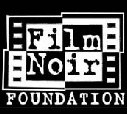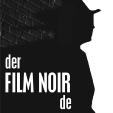Film Noir Primer
By Phil Stufflebean
Editor, AmericanFilmNoir.com
In the early 1940s a style of filmmaking emerged in Hollywood that was a clear departure from what audiences were used to seeing. This new style was discernible by a dark atmosphere, hard shadows and peculiar camera angles, the very elements that most directors tried to avoid since the earliest days of motion pictures. These films would also differ in their stories, where the line between good and evil was often blurred and a sense of despair prevailed. And, unlike most of the melodramas of the 1930s, these films more often than not did not have a congenial ending. American viewers were less perceptive of this emerging film style as WWII had brought forth a stream of war films which depicted the precariousness of life and the realities of a dark world. But in war films their was a clear distinction between good and evil and there was an abundance of heroes, real and fictional.
In France there was no such transitional period. American films had been popular in France before the war but the German occupation in 1940 meant that American films would not be seen in France for nearly five years. By the time American films returned to France, audiences there took notice of this dark, shadowy style that was conveyed in many of the films they were seeing. The French critics subsequently coined the term “film noir” to describe these films. It would be some years before the term was embraced by American critics. Film noir encompassed a relatively short time span of less than 20 years and essentially ended by the late fifties. Yet today, the interest in these films, both from a technical and cultural perspective is flourishing.

















| The Films |
| The Actors |
| The Directors |
| The Writers |
| Cinematographers |
| Year of Release |
| Studios |
| Near Noir |